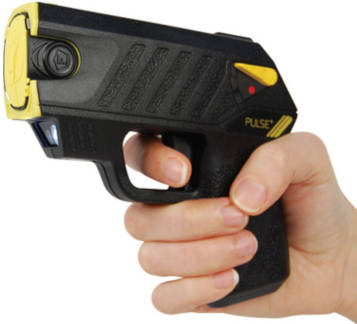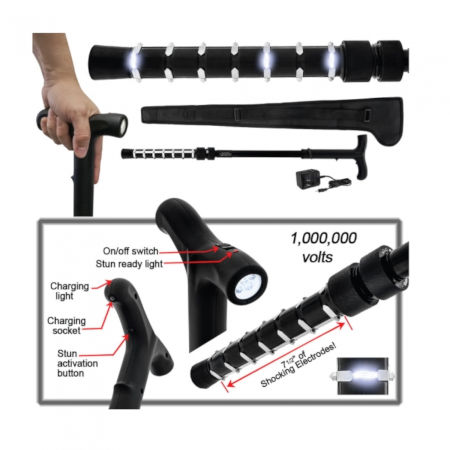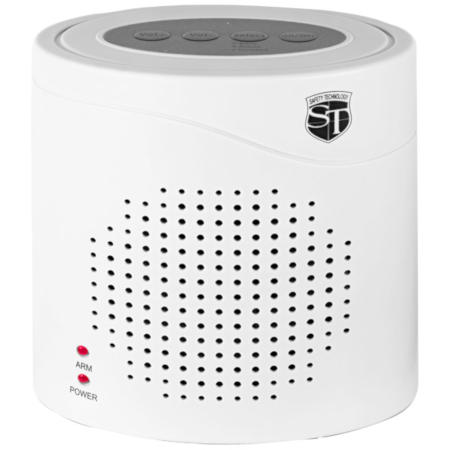Senior Self Defense Weapons
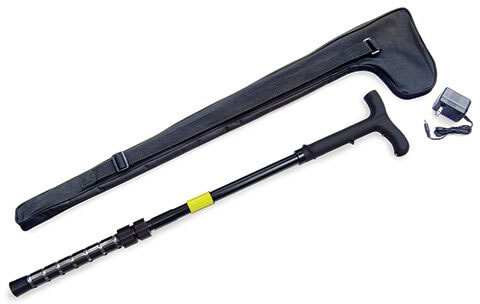
Many criminals like to target the elderly because they are viewed as weaker and more vulnerable. Well, it’s time to break the stereotype!
Many seniors are taking charge of their own safety and security; no longer content with relying on external help for protection. Here are a few self defense weapons for seniors that are perfect for our revered elderly.
Best Self Defense Weapons for Senior Citizens
The cane, pepper spray, and the TASER weapon are all good options for protecting one’s self against would be bad guys.
Cane
Senior citizens who use canes don’t realize that they have a very effective self defense weapon right in the palm of their hand. A cane, usually made with wood or some other lightweight material, can be used to parry an attack or to go on the offensive.
Although a cane can be used to make multiple blows or thrusts, certain situations may allow a person only one strike. When using a cane, it’s important to hit your attacker where it will hurt them most. Hitting someone and failing to overcome them will only anger them and expose you to more danger.
Another option in this vein is the stun cane. This device is electrified near the tip and can be used to give a powerful jolt of electricity. It’s rechargeable and can be used for months without having to recharge.
Pepper spray
A can of mace can be a convenient weapon for the elderly. It’s lightweight, easy to carry and use and can be very effective. It only works within a short range, however, so it’s important to aim well.
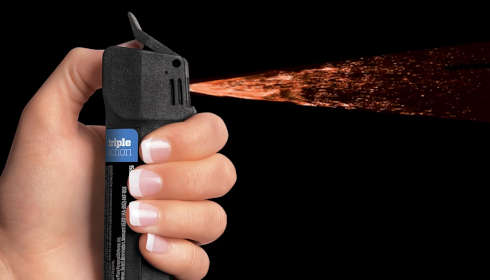
If you aren’t careful, pepper sprays can affect not just your attacker, but you as well. Spray in the direction of the wind or if that’s not possible, directly in the eyes or mouth of your attacker.
TASER Weapon
A TASER device is a very powerful weapon for seniors. It’s a handheld device, quite lightweight and is battery-operated. These devices are the premier choice because of their immediate effectiveness. Tasing someone instantly overwhelms the body’s neurological impulses that control muscle movement. A person being tased immediately tenses all their muscles and is unable to move any of them.
One drawback of this option is that it is expensive compared to other self-defense products. Costing about $400, it can be out of reach for those on a fixed income.
Self Defense for Seniors
If you’re looking for something to give to an elderly loved one, any of the products listed above would be welcome. Self defense for seniors is a topic that's relevant for all of us who have aging parents or other loved ones.
Be sure to help them protect themselves by introducing these types of protection devices and to have meaningful conversations on what they can do to help themselves.
Self Defense Advice for Seniors
Seniors can effectively defend themselves using simple techniques tailored to their physical abilities. These include unarmed defense methods such as wrist releases, palm heel strikes, and elbow strikes, that need not demand overwhelming strength or agility. Contrary to popular belief, it's not always about overpowering an opponent but more about gaining a moment's advantage to escape danger. Even the seemingly frail hands of an elderly person can execute these techniques with surprising efficacy when done right. This prepares them not just physically, but gives them mental assurance too. Let's explore how these techniques work.
Our self-defense advice for seniors encompasses a range of non-lethal self-protection options, including tips for situational awareness, utilizing personal alarms, and choosing appropriate pepper sprays or stun guns designed with ease of use in mind. We also provide guidance on physical tactics suitable for older individuals to effectively defend against potential threats.
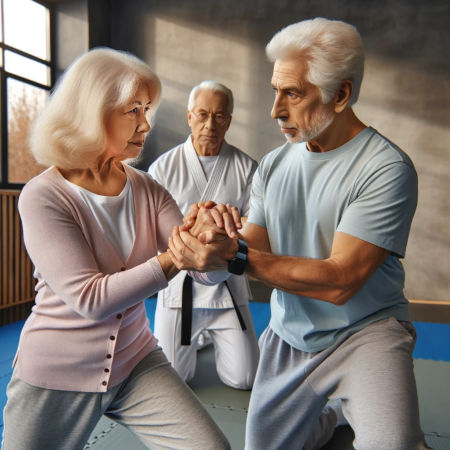
Types of Self Defense Techniques for Seniors
As we age, it becomes increasingly important to be aware of the self-defense techniques designed to suit our needs. Unarmed defense techniques are a crucial component for seniors. The goal is to maximize safety without overstraining physical abilities. Let's explore these essential methods in detail.
Unarmed Defense Techniques
Seniors can benefit from learning and practicing unarmed self-defense techniques that prioritize leverage, technique, and timing over brute strength. Wrist releases enable seniors to escape when someone grabs their wrists, useful in close encounters. Also, palm heel strikes require minimal physical exertion as the bottom part of the palm is used to strike an assailant. Moreover, elbow strikes leverage the natural strength of the body and can be efficiently employed by seniors in self-defense scenarios.
It's crucial for seniors to understand that these techniques focus on using quick reflexes and leverage to create opportunities to escape from danger rather than overpowering an opponent through sheer force. This demonstrates that even without extensive physical prowess, seniors can effectively defend themselves using proper training and technique.
Moving on from unarmed defense techniques, it's also beneficial for seniors to consider the use of defensive tools.
Defensive Tools
Introducing seniors to simple self-defense tools can provide them with additional options for protecting themselves in case of an emergency. For example, pepper sprays offer a non-lethal means of defending against attackers by causing temporary blindness and irritation to the eyes, allowing time for escape or help to arrive. These compact and discreet devices are easy to carry and use.
Moreover, personal alarms are another effective protective tool. When activated, these devices emit a loud siren-like sound that can startle an attacker, attract attention, and serve as an immediate deterrent to a would-be assailant. Additionally, tactical canes are gaining popularity among seniors as effective self-defense tools due to their dual functionality as walking aids and defensive implements.
Stun Cane with Flashlight 1 Million Volts
For instance, the TBO-TECH online store offers specifically designed personal safety products for seniors, including keychain pepper sprays and discrete personal alarms that are easy to carry and use.
By providing seniors with access to these practical tools and educating them on their proper use while ensuring they understand the legal aspects surrounding their usage, a comprehensive approach toward senior safety can be achieved.
In sum, equipping seniors with a diverse set of self-defense skills and tools not only enhances their awareness but also significantly boosts their sense of security and confidence. Mastering situational awareness is paramount for elderly safety in various settings.
Situational Awareness for Elderly Safety
One of the most crucial skills in self-defense is recognizing and avoiding potentially hazardous situations before they escalate. This skill is particularly important for seniors due to the heightened vulnerability that can come with age. Situational awareness involves being tuned in to your environment and understanding how to navigate it safely. Here are some essential aspects of situational awareness that can greatly enhance the safety of seniors.
Environmental Awareness
Understanding the significance of one's surroundings cannot be overstated. It's not just about looking at where you're going, but also about being mindful of the environment itself. This includes familiarizing oneself with well-lit areas, sticking to populated places, and knowing where to seek help if needed. For example, if you're out for a walk, it's best to stick to well-lit paths and avoid poorly lit or isolated areas.
It's like navigating through a room filled with furniture - you wouldn't want to accidentally stub your toe on a chair in the dark when you could have just switched on the light. Being aware of your environment helps you anticipate potential risks and take steps to minimize them.
Body Language Awareness
Another important aspect of situational awareness is understanding how we communicate non-verbally—our body language. Confident body language and eye contact convey an air of assertiveness, which can deter potential threats. It's like saying 'I know what I'm doing' without actually speaking. This simple act can make you less likely to be targeted by individuals with malicious intent.
Teaching seniors to use this body language to seek assistance when needed can create a powerful deterrent effect. Establishing eye contact and confidently seeking help from authority figures or passersby can effectively signal to others that something isn't right without having to say a word.
Incorporating these elements into everyday life can empower seniors to actively look after their own safety by recognizing potential risks early and taking steps to address them confidently and efficiently. Empowering seniors with practical safety measures is vital, yet physical defense skills should not be overlooked. Now let’s explore how employing physical strength plays a key role in effective self-defense techniques for the elderly.
Employing Physical Strength for Self-Defense
As we age, our bodies go through changes, and it's essential to understand how physical capabilities can be utilized for self-defense. Strengthening the body through targeted exercises can significantly improve overall balance, coordination, and muscle strength. This isn't about turning seniors into bodybuilders; instead, it's about boosting their physical capabilities to better protect themselves.
Strength Training: Encouraging seniors to engage in strength training exercises maintains muscle mass and bone density while enhancing overall physical fitness. This is key when it comes to self-defense because being physically strong can help older individuals feel more capable and confident in their ability to defend themselves. Exercises like lifting light weights or using resistance bands can improve arm and leg strength, making it easier to push away an attacker or escape from a dangerous situation.
Moreover, incorporating balance exercises into daily routines can enhance stability, reducing the risk of falls and improving agility—these benefits are invaluable, especially in high-pressure scenarios where quick movements or evasive actions might be necessary.
Adaptive Defense Techniques: It's also crucial to adapt self-defense techniques to suit the unique physical abilities of seniors. While raw power might not be as accessible as it once was, leveraging techniques can provide effective means of defense. By focusing on movements that rely on leverage and technique rather than sheer force, elderly individuals can learn how to use an attacker's strength against them.
For example, rather than relying solely on punching or kicking with brute force, techniques such as joint locks or redirection of force through leveraging body weight can be incredibly effective. These approaches don't require extensive physical strength but emphasize using an attacker's momentum against them.
Consider techniques like wrist releases or pressure point manipulation—they are helpful tools that don't necessitate significant physical exertion but can still make a big impact in a self-defense situation.
Additionally, practicing defensive movements aimed at deflecting attacks and creating distance can provide valuable tools for elderly individuals. Techniques like blocking incoming strikes and quickly moving out of harm's way are incredibly effective.
By understanding how to utilize physical strength effectively and adapting defense techniques to individual capabilities, seniors can confidently navigate potential threats and safeguard themselves in various situations.
Understanding the importance of physical preparedness is key when looking at elderly self-defense from a holistic perspective. Now, let’s shift the focus to another vital aspect – exploring exercises and mobility tailored to enhance their capacity for self-protection.
Exercise and Mobility for Elderly Defense Preparedness
As we age, preserving mobility, balance, and coordination becomes increasingly important. Engaging in regular physical activity is one of the most beneficial ways to maintain independence and overall health, especially when it comes to enhancing self-defense skills for seniors.
Flexibility Exercises: Activities like yoga or tai chi are not only relaxing but also help improve flexibility, balance, and coordination—crucial for effective self-defense and general safety. These exercises can lead to increased agility and the ability to react quickly in various situations, making them valuable tools in the realm of self-defense.
Benefits of Flexibility-Focused Exercises
| Exercise Type | Benefits |
|---|---|
| Yoga | Improves flexibility and balance |
| Tai Chi | Enhances coordination and stability |
These gentle yet powerful movements are integral in strengthening the body and mind, allowing for better maneuverability and confidence. They are designed to cater to people of all ages and fitness levels, making them accessible to most seniors.
Mobility Aids: For those necessitating mobility assistance due to aging-related challenges, incorporating self-defense techniques that can be performed while utilizing mobility aids such as walking canes or walkers is essential. These aids provide support and stability during exercise routines aimed at improving strength and balance.
Benefits of Mobility Aids
Using mobility aids has multiple benefits:
- Stability: Walking canes or walkers offer added stability, reducing the risk of falls during exercise.
- Support: The presence of a walking aid provides additional support when engaging in exercises that focus on building strength and balance.
For instance, integrating self-defense drills that involve using walking aids can ensure that seniors are prepared to defend themselves in real-life scenarios where they are likely to have these aids with them. This practical approach enables seniors to adapt their self-defense techniques to their specific physical needs while maintaining their confidence and safety.
By incorporating flexibility exercises and embracing suitable mobility aids as part of their routine, seniors can significantly improve their defense readiness while maintaining overall physical well-being.
Understanding exercise's critical role in senior safety, it's time to explore further precautions to ensure protection for our elderly population.
Precautions to Ensure Protection for Seniors
As seniors navigate their golden years, ensuring a safe living environment is critical to their overall well-being. Home security measures play a vital role in providing a sense of security and peace of mind. Adequate lighting inside and outside the home is important not only to illuminate pathways and rooms but also act as a deterrent to potential intruders. Motion-activated lights and well-lit entryways reduce the risk of trips or falls, especially at night, creating a safer environment for seniors.
Beyond lighting, secure locks are an essential component of home security for seniors. Deadbolts and smart locks provide added layers of security against unauthorized access. Smart locks can be especially beneficial, allowing seniors to lock or unlock doors remotely using their smartphones, enhancing convenience, and adding an extra element of control over home security.
In addition to robust locks, investing in a reliable home security system can significantly bolster the safety of senior citizens. Modern security systems are equipped with features like motion detectors, cameras, and alarms that provide real-time monitoring and alerts for any unusual activity. Some systems even offer emergency response services, automatically contacting authorities in case of a break-in or other emergencies.
Imitates the Sound of a Vicious Barking Dog
Emergency contacts are another critical aspect of senior safety. Maintaining a list of emergency contacts is essential for seniors living alone or with minimal assistance. This list should include family members, neighbors, local authorities, and medical professionals. Displaying this information prominently by the phone or keeping it easily accessible ensures prompt assistance in case of a medical emergency or any other urgent situation. Having these contacts readily available helps seniors receive critical aid as quickly as possible when seconds matter.
Consider creating a dedicated contact list with names, phone numbers, and addresses and include primary healthcare providers and specialists to cover varying emergency scenarios.
In addition to physical lists, modern solutions allow stored emergency contacts to be easily accessed through voice-activated devices such as smart speakers or virtual assistants. This technology offers an additional layer of accessibility, especially during moments of distress.
By implementing these measures—enhancing home security through lighting and secure locks and maintaining an up-to-date list of emergency contacts—seniors can significantly improve their safety at home while enjoying greater peace of mind.
Now let's explore strategies that older adults can employ to minimize the risk of becoming targets for crime.
Avoiding Criminal Attention: A Senior's Guide
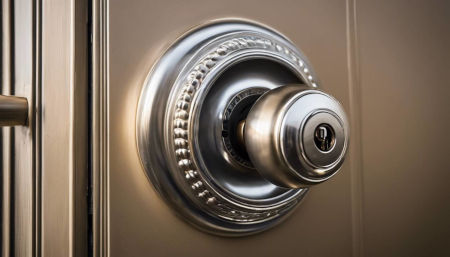
As we age, it's crucial to stay informed about protecting ourselves from criminal activities that target seniors. Scam awareness is vital in avoiding falling victim to fraudulent schemes. There are numerous scams and frauds that prey on the elderly, and navigating through these requires vigilance, awareness, and knowledge of common red flags.
One common scam involves unsolicited phone calls or emails requesting personal information, such as bank account details or social security numbers. Educating seniors about these tactics can help reduce the risk of falling victim to identity theft or financial scams. For instance, it's important for them to know that legitimate organizations won't ask for sensitive personal information over the phone or through an email. Empowering seniors with this information equips them to recognize and resist fraudulent attempts.
Additionally, as online communication and transactions rise, seniors need education about internet safety. Phishing attempts are prevalent - these are fraudulent messages designed to trick recipients into providing sensitive information or clicking on harmful links. Teaching seniors how to identify potential phishing attempts and secure their personal data online can significantly reduce their vulnerability to cybercriminals.
For instance, seniors should be cautious about sharing personal information on social media and refrain from clicking on suspicious links or attachments sent via email. Following simple guidelines such as never sharing passwords or financial information online goes a long way in protecting against digital scams.
By raising awareness about common scams targeting seniors and offering practical advice for digital safety, we can protect our elderly loved ones from falling victim to criminal attention. These measures not only safeguard them against financial loss but also contribute to their overall well-being and peace of mind.
Armed with the right knowledge and tools, seniors can navigate a world where criminal activities may attempt to target them with malicious intent.
Effective Use of Personal Security Products for Seniors
Seniors, like anyone else, deserve to feel secure and protected. With advancements in technology and a better understanding of personal safety needs, there are now various self-defense products available that are specifically designed for seniors. These products go beyond traditional self-defense items to provide convenient and discreet protection.
For instance, keychain alarms offer a simple yet effective way for seniors to call attention in case of an emergency. A loud alarm can startle an attacker or draw passersby's attention if a senior feels threatened. This small and inconspicuous device can provide a sense of security without being obtrusive or difficult to carry.
Personal safety alarms also add an extra layer of protection by emitting a loud sound that can alert those nearby in case of danger. These devices are designed to be easy to activate, making them ideal for seniors who may have limited mobility or dexterity. It's about offering reassurance and reducing the feeling of vulnerability that often accompanies aging.
Additionally, discreet pepper sprays are another valuable tool for seniors to consider. These small canisters are easy to carry and can provide a means of defense against potential attackers. What's more, they can offer peace of mind when navigating public spaces or areas where seniors may feel particularly vulnerable.
Wildfire 1.4% MC 1/2 oz pepper spray with belt clip and quick release keychain
The range of self-defense products designed specifically for seniors is not just about providing physical protection; it's also about empowering individuals to take control of their personal safety. When used appropriately, these products act as a deterrent and give seniors the confidence to navigate their daily lives with a heightened sense of security.
In the next section, we will explore how proper training and familiarization with these self-defense products can enhance their effectiveness and ultimately contribute to improved personal security for seniors.
Ensuring the safety and well-being of seniors through tailored self-defense options is crucial in fostering independence and confidence. With the right tools and knowledge, seniors can navigate their daily lives with an increased sense of security and empowerment.
What specific self-defense techniques can be effective for seniors?
In "Self Defense Advice for Seniors," we explore a range of effective techniques tailored for elderly individuals. Some of these techniques include basic strikes to vulnerable areas (like groin or eyes), using personal safety devices such as pepper spray or personal alarms, and learning simple yet powerful moves to break free from grabs and holds. According to studies, seniors who undergo self-defense training not only gain physical skills but also experience increased confidence and reduced fear of becoming victims.
Are there any specialized self-defense classes or programs designed for seniors?
Yes, there are specialized self-defense classes and programs designed specifically for seniors. These programs recognize the unique needs and limitations of older individuals, focusing on practical techniques that can be easily learned and implemented. According to a study conducted by the National Council on Aging, seniors who participate in such programs experience an increased sense of safety and confidence, as well as improved physical fitness. These classes emphasize prevention strategies, situational awareness, and simple yet effective self-defense techniques tailored to the abilities of seniors.
Are there any recommended self-defense tools or products specifically tailored for seniors?
Yes, there are self-defense tools and products specifically tailored for seniors. One of the most recommended options is a personal safety alarm, which can be easily carried and activated in case of an emergency, attracting attention to deter potential attackers. Additionally, there are walking canes designed with hidden features, such as built-in tazers or pepper spray dispensers, providing seniors with a means to protect themselves while also maintaining mobility. Statistics show an increasing trend in using these tools among older adults, highlighting their effectiveness in enhancing safety and confidence.
What additional safety measures should seniors consider alongside self-defense training?
In addition to self-defense training, seniors should consider implementing various safety measures to enhance their security. Firstly, installing a home security system can deter potential intruders and provide a sense of peace. Secondly, adopting technology like wearable panic buttons or smartphone apps can offer immediate assistance during emergencies. Additionally, making modifications to the home environment such as adding adequate lighting and handrails can prevent accidents and falls. According to the National Council on Aging, 1 in 4 Americans aged 65+ experience a fall each year, so taking preventive measures is crucial for senior safety.
How can seniors improve their situational awareness to prevent potential attacks?
Seniors can improve their situational awareness by staying alert and mindful of their surroundings. They should trust their instincts and avoid isolated or poorly lit areas. It is also important to maintain good posture and project confidence. According to a study conducted by the National Crime Victimization Survey, being aware of one's surroundings can significantly reduce the risk of becoming a victim of a crime.
Add your comment now!
Post Comment

